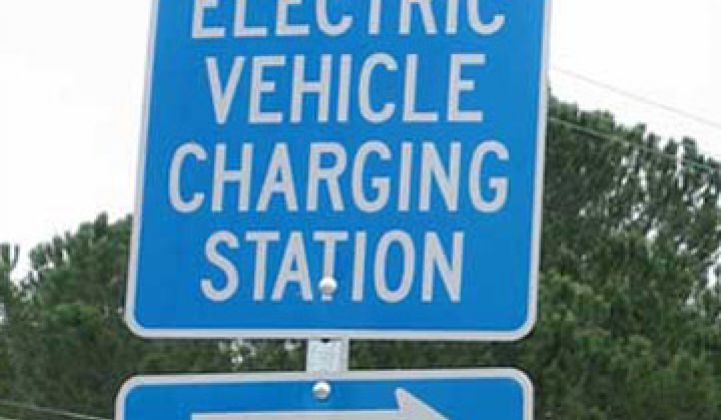The ideal infrastructure to support the first few electric vehicles is a hot topic of debate among a bevy of startups, technology giants and utilities. For now, however, it’s going to have to be flexible -- and to some extent, it doesn’t really matter.
At The Networked EV in San Francisco on Tuesday, panels discussed charging infrastructure and distribution automation upgrades to support EVs. For every potential charging scenario, there is a company that is building a solution. But another panel debated whether there will even be enough widespread EV adoption anytime soon to warrant the range of charging options being discussed, and if the focus should instead be on more likely scenarios for adoption: hybrids, heavy duty and fleet vehicles.
“We can all dream about different types of business models and usage models once we have a fully deployed system,” said Steven Berens, CSO of Power Tagging. “It’s about flexibility for at least the next decade.”
That flexibility may also mean starting in more obvious areas, including electric buses, according to Proterra, which has developed fast-charging buses that can 'fill up' in 10 minutes. As for cars, they will be coming in such small numbers, “It doesn’t amount to a whole hill of beans,” said John Bryan, CTO of Fleet Energy.
Fleet vehicles are another place where EVs could make a lot of sense, as long as the lifetime cost is cheaper than gas-powered cars. And lastly, the conference focused on fully electric cars, but plug-in hybrids, with their longer range, are far more likely to be adopted by the masses. Even if range anxiety is imagined, it is still there. “People in America aren’t really excited about the idea of being inhibited by anything,” said Marc Gottschalk, Chief Business Development Officer for Proterra.
On the charging side, there was a lot of excitement about the options for charging, but more than 80 percent of charging will happen at home, according to Jose A. Salazar, Senior Project Manager at the Advanced Technology, Field Technologies Group for Southern California Edison.
For some early adopters, home will be street parking or in garages, but since the EV is likely to be the second or third car in a family fleet, the chances are that there’s a garage available for many first buyers. No one is sure how to bridge the gap to the mass market, and many experts wonder if a nation of charging stations and/or battery switching stations is putting the cart before the horse.
No one, not even the carmakers, are sure what the appeal of EVs will be with gas at $3 a gallon, so utilities are wary of too much infrastructure investment at the moment. A General Motors executive was rumored to have questioned whether the Volt might be more like a Pontiac Solstice; everyone who wants one will buy one and then no one else will ever purchase one.
“Everyone at these conferences, we drink our own Kool-Aid,” said Phil Davis, who serves as Senior Manager, Demand Response Solutions for Schneider Electric and is a former car salesman. “But there’s no logic to consumer behavior, that’s why car salesmen act the way they do.”



